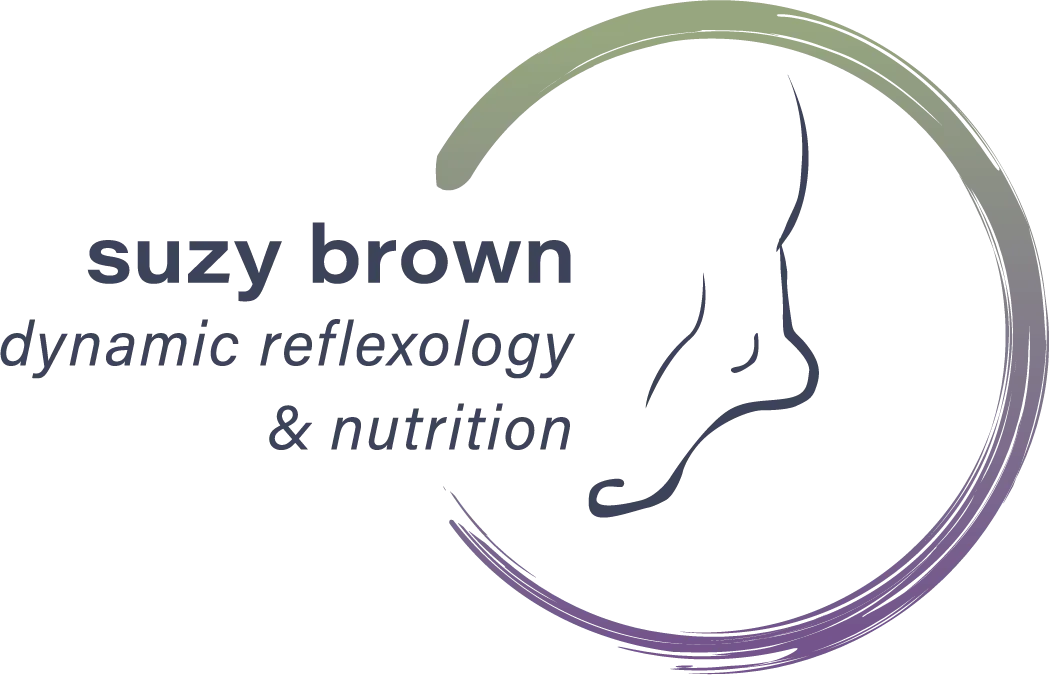
👣 Reflexology
👣 Find Relief, Restore Balance, Reignite Your Vitality
Time to relax your body & mind. Recharge & care for your soul.
Allow yourself the luxury of complete relaxation and experience the profound effects of reflexology on your
mind, body, and spirit.
Certified Reflexologist & Holistic Nutrition Practitioner
Mondays and Wednesdays
Tuesdays and Thursdays
Frequently Asked Questions
Definition of Reflexology
Reflexology, an integrative health practice, maps a reflection of the body predominantly on the feet, hands, and outer ears. It uses unique manual techniques to deliver pressure to neural pathways assisting the body to function optimally.
Written and accepted by the Tri-Board Organizations (ARCB, NCRE, and RAA) on September 16, 2016.
An Experienced, Skilled Reflexologist Will...
Have a Reflexology-based education (minimum 200 hours).
Continue his/her education, staying abreast of new discoveries in the field.
Have the experience needed to address a client's concerns.
Be involved with professional memberships:
State association and/or
National association (RAA)
May a board certification: American Reflexology Certification Board (ARCB).
How is this different from other programs?
Unlike one-size-fits-all diets, this program is fully customized to your gut, liver, and lymphatic needs. We start with a deep-dive health assessment and gut test to create a nutrition plan that works with your biology—not against it.
I’ll also share real-life tips and tricks to make this sustainable. Meal prep becomes your friend—but don’t worry, you won’t be spending hours in the kitchen. With a little organization and intention, you’ll feel confident and prepared (without the overwhelm).
This isn’t about perfection. It’s about progress, support, and results that actually last.
What happens during a reflexology session?
Absolutely! This program was designed with real life in mind—including work, kids, and all the chaos in between. When we set ourselves up for success with a little prep and structure, even the busiest schedule becomes more manageable.
How does reflexology feel?
It is difficult to describe how it actually feels. Reflexology does not tickle. Some clients tell me after they get of the table, that it feels like walking on clouds. Everyone says it is most relaxing and they feel sometimes more refreshed after a one hour session of Reflexology than after one night sleep.
Does reflexology hurt?
Reflexology does not have to hurt to work. The reflexologist will apply pressure to the feet, hands and outer ears with only using the thumb, index and middle finger. No tools will be used. The amount of pressure will be adjusted according to each individual client’s pain tolerance. When the reflexologist finds a tension or a congestion, you may experience a kind of pain that ‘hurts good’. With gentle finger pressure on these areas, relief is often felt very quickly.
How often should I receive reflexology sessions?
It depends on your stress level and how your body responds to reflexology. If there is an acute health issue, I may recommend a targeted protocol tailored to your needs. My ultimate goal, however, is for you to enjoy at least one session per month for ongoing maintenance, relaxation, and preventative health.
This steady rhythm helps reduce stress, restore balance in the body, and keep you feeling your best. I’ll also share simple self-help techniques you can use at home between sessions to extend the benefits.
How fast can I see results?
It varies from person to person and depends on how long a condition exists and how your body responds to reflexology. A general rule is: The longer a condition exists in the body, the more sessions it takes to clear it. For a chronic backache for example, you most likely need more sessions than for a one week old shoulder pain.
What is the difference between reflexology and massage?
What is the difference between reflexology and massage?
Massage deals with touch all over the body with major emphasis on muscular, circulatory and lymphatic systems. Reflexology not only helps the muscular, circular and lymphatic systems, it also has a profound effect on the inside of the body, such as the head, neck, chest, abdomen and so forth. In reflexology only shoes and socks are removed, the client otherwise staying fully clothed.
Massage deals with touch all over the body with major emphasis on muscular, circulatory and lymphatic systems. Reflexology not only helps the muscular, circular and lymphatic systems, it also has a profound effect on the inside of the body, such as the head, neck, chest, abdomen and so forth. In reflexology only shoes and socks are removed, the client otherwise staying fully clothed.
Are there any side effects from reflexology?
Reflexology is a safe, non-invasive form of touch, and there are no harmful side effects. Most people leave a session feeling deeply relaxed, refreshed, and more balanced.
That said, because reflexology encourages the body’s natural detoxification process, you may occasionally notice temporary reactions such as:
Mild fatigue – Your body may be signaling the need to rest as it works to rebalance.
Headache or flu-like symptoms – Sometimes called a “healing crisis,” this can indicate that your body is going through a deeper detoxification.
These responses are usually short-lived and a normal part of the healing process. To support your body, it’s important to:
Drink plenty of water
Rest and be gentle with yourself
Nourish your body with whole foods
Avoid sugar, alcohol, refined, and processed foods
If any symptoms persist beyond 2–3 days, please let me know and contact your medical provider for guidance.
Next Steps
Book a Reflexology Session or Nutrition Call
email Suzy at [email protected]
© 2025 suzy brown dynamic reflexology & nutrition. All rights reserved.